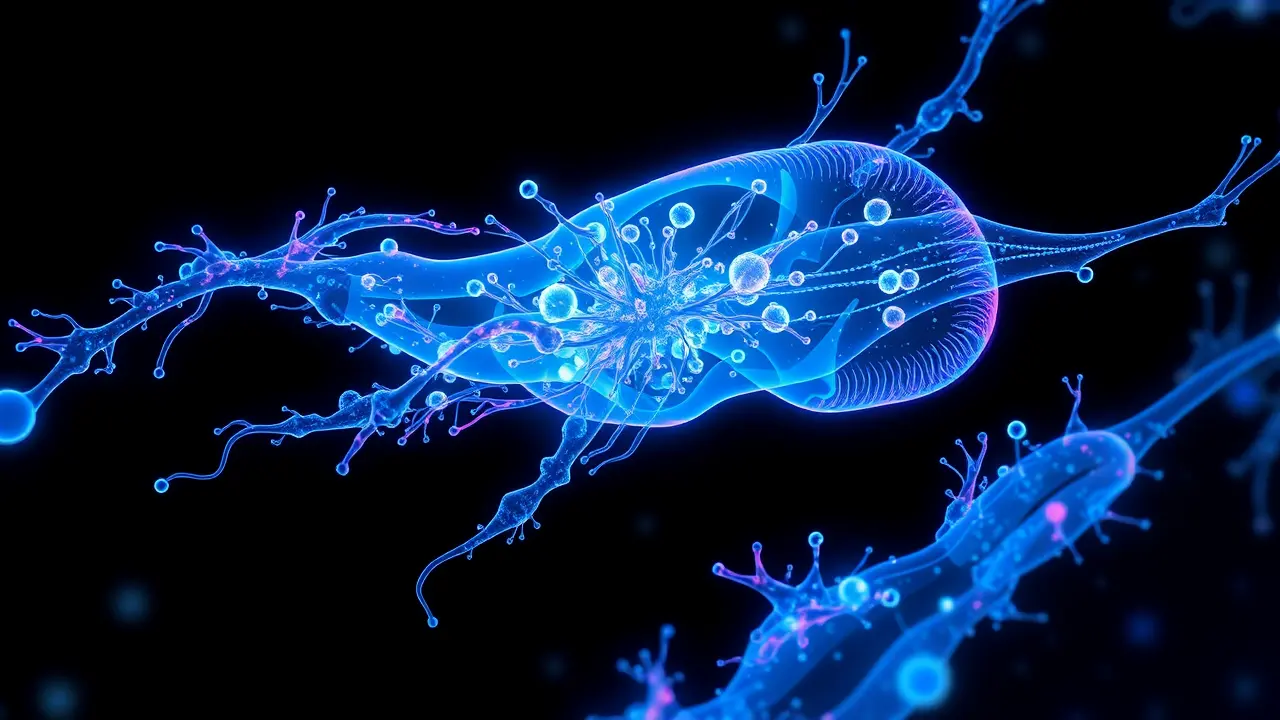
SciencebiologyMarine Biology
A new microscopy breakthrough is revealing the oceans’ invisible life
RA
Rachel Adams
23 hours ago7 min read
In the profound silence of the pandemic's global pause, a quiet revolution was brewing not in laboratories alone, but in the very architecture of life itself, yielding a microscopy breakthrough that is now pulling back the curtain on the oceans' invisible world. This isn't merely an incremental step in imaging technology; it's a paradigm shift, akin to the first time a telescope was pointed at the heavens, revealing a cosmos in a drop of seawater.The technique, known as ultrastructure expansion microscopy, functions by physically inflating biological specimens, embedding them in a polymer gel that swells with water, effectively blowing up cellular structures to four or more times their original size. This allows scientists to peer into the intricate machinery of plankton—the drifting, microscopic organisms that form the foundational base of the marine food web and produce over half of the planet's oxygen—with a clarity previously reserved for lab-cultured model organisms like fruit flies or human cells.The effort is intrinsically linked to the ambitious TREC expedition, a sprawling, holistic scientific journey that mirrors the great voyages of discovery but armed with genomic sequencers and super-resolution microscopes instead of sextants. For the first time, researchers are visualizing the inner workings of hundreds of diverse marine species, from radiant radiolarians with their intricate silica skeletons to the whip-like flagella of photosynthetic cyanobacteria, mapping what can only be described as the evolutionary blueprint of life’s smallest ocean dwellers.This is the critical first stroke in a nascent global atlas, a project with the monumental goal of cataloging the breathtaking complexity that evolved beneath the waves, a complexity we are only beginning to fathom. Consider the implications: by understanding the precise structure of a diatom's chloroplast or the contractile vacuole of a marine paramecium, we can start to decode how these organisms have adapted to rising ocean temperatures, acidification, and plastic pollution.This isn't abstract science; it's a diagnostic tool for a feverish planet. The data pouring in from this project will likely rewrite textbooks on marine biology and evolutionary theory, revealing convergent evolutionary pathways and novel cellular strategies for survival in the planet's most vast and least understood ecosystem.Experts like Dr. Anya Sharma, a marine microbiologist not directly involved with TREC but closely following its findings, describe it as 'the biological equivalent of the Hubble Deep Field—a sudden, profound depth of focus on a universe we knew was there but could never truly see.' The consequences extend beyond pure biology, potentially inspiring new biomimetic materials, from stronger glass based on diatom structures to more efficient solar cells modeled on algal photosynthesis. Yet, this revelation arrives at a moment of profound crisis for our oceans, a poignant reminder of the exquisite complexity we stand to lose through anthropogenic carelessness. This breakthrough, therefore, is more than a technical marvel; it is an urgent, eloquent plea for the preservation of a world we are only just learning to see, a foundational step in understanding the delicate, invisible engine that drives the health of our blue planet.
#featured
#microscopy
#plankton
#marine biology
#scientific breakthrough
#ocean exploration
#TREC expedition
#evolutionary biology
Stay Informed. Act Smarter.
Get weekly highlights, major headlines, and expert insights — then put your knowledge to work in our live prediction markets.
Related News
© 2025 Outpoll Service LTD. All rights reserved.
